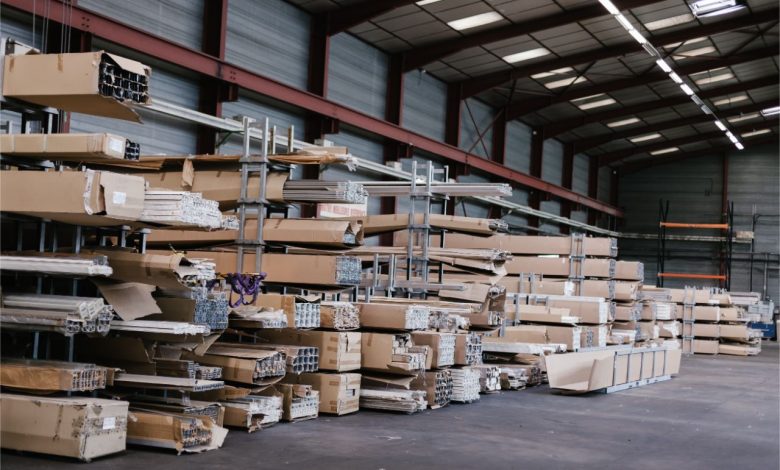Several Uses of Aluminum in Construction Projects

The versatility of aluminum as a material for several construction projects makes it ideal for all kinds of applications. Its unique properties, which are still retained even after going through a lot of forming processes, tend to be a whole lot better if other building materials like steel, wood, or stainless steel were used. Thus, the uses of aluminum in construction can range anywhere from structural, or simply decorative purposes. Though aluminum does not have the greater mass that is typical for construction materials, it is a formidable choice because of its combination of resilience and lightness in weight. And with its strength, durability, corrosion resistance, and recyclability, it has become an essential material for the industry, and its use in construction applications has increased steadily over the years.
The characteristics and properties of aluminum as a material have led to several revolutionary and innovative changes in building techniques, as well as various architectural and construction projects. Aluminum can be extruded, rolled, and casted, which are the common processes for window frames and other glazed structures. It can also be used for roofing, siding, and curtain walling, and can be a good alternative for ventilation, heating and cooling systems, latches, studs, and railings.
The numerous uses of aluminum have also led to it being applied in both residential and commercial buildings. It is all because of its intrinsic properties of lightness and corrosion. Its durability and non-toxic nature, as well as being able to be formed in any desired design and shape, makes it self sufficient to create structures that are not possible if you plan on producing them with wood, steel, or plastic.
Wall and Facade Cladding
Homeowners, as well as building owners, may think that paneling or cladding for their structures is only used for decorative purposes. However, this is not always the case. Cladding also provides a number of benefits, including enhanced ventilation, acoustics, and greater resilience to physical impacts. And one of the most common uses of aluminum would be for the application of a wall cladding material. This is because of its ease of installation, cost-effectiveness, and machinability. Furthermore, manufacturers can create a wide range of aluminum paneling designs to fulfill the needs of their customers. Various metal fabrication and cutting techniques that are all effective on aluminum can also be used to make any changes to the design.
In terms of aluminum cladding, manufacturers often use aluminum sheets. Flat bars and tubes made of high-quality aluminum can be simply assembled. This makes it a part of any interior or external wall cladding. Also, even non-residential buildings are increasingly being clad with aluminum facades. Facades like these can improve a building’s aesthetic, strengthen its longevity, and provide valuable insulating features. All while increasing the structure’s energy efficiency. One of the qualities that makes aluminum particularly ideal for cladding applications is its high strength-to-weight ratio. The small weight of the material makes it easier to handle on site. This, in addition to lowering the expense of shipping aluminum equipment.
However, despite its weight advantages, aluminum has strength properties that are comparable to those of other metal facade panels. Furthermore, the lightweight and great strength of the material results in a reduced load on the building’s supporting framework. As a result, the structure’s dimensions can be lowered. This is especially significant when it comes to curtain walls for high-rise buildings.
Window Frames
Similar to steel, aluminum has an excellent strength to weight ratio. This means that, unlike wood or plastic, only a small amount of this material is required to obtain the same weight for the same strength. With this, aluminum tends to have a rigid structure, yet is flexible enough to be used in design executions. They come in a variety of finishes as well. It includes anodized colors and raw mill finishes. It varies with hardness, depending on the alloy used in the extrusion process.
Because of this, one of the most popular uses of aluminum relative to construction projects has been the low-profile aluminum window frame. The term low profile in this case means that it does not take too much of the components of aluminum just to form a single aluminum window frame. This, thus, offers several implications — being budget friendly as they do not have the need to buy a high volume of materials; and the window frames can still be able to have the same sturdiness without any quality drawbacks, despite the low profiles.
Structural Glazing and Curtain Walls
For most corporate and industrial buildings, they have started to turn to glazed facades. It is for its ability to provide a sleek look to the design. All with an incredibly low heat-gain coefficient through glazing solutions. These have been made possible as part of the several uses of aluminum. Furthermore, curtain wall systems are typically designed using aluminum framing members. These frames are filled with glass for a more appealing finish and improved daylighting effect.
Ventilation
Ventilation has often been overlooked as part of the processes for construction projects. It is actually an essential part of any kind of building. Proper ventilation structures and systems are responsible for making sure that the people in a certain building are comfortable. This also indicates that the heat exchange process is operating at peak efficiency to keep the building’s temperature under control. Without proper ventilation, rooms within the building can lead to stuffy or cold interiors, making them not conducive to occupancy.
And apart from the ventilation design and system, it is also important that the materials used for applications are appropriate. In line with this, aluminum is the most ideal material to be used, particularly for ventilation tubings or passageways. Aluminum tubing can serve as an efficient application for gas exchange. And since aluminum is non-corrosive, it requires less maintenance and repair. Because there is no corrosion, any gas or fluid can pass through the ventilation tubing without causing damage to neighboring components, whether electrical or structural.
Key Takeaway
The various uses of aluminum make it ideal for several applications for residential, commercial, and even for industrial buildings. Its uses can range from window frames, wall and facade cladding, structural glazing, and even for ventilation systems. And given that it possesses unique qualities, particularly its lightweightness, aluminum is deemed to be that material that surprisingly does not compromise on quality, cost, and durability. Thus, when you are planning on the materials you will be using for your construction projects, you cannot go wrong with choosing aluminum.





